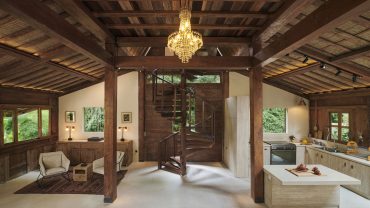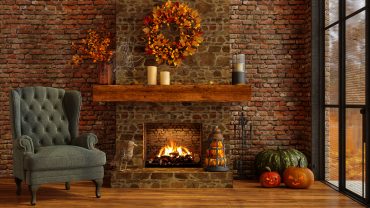A robin’s cheerful chirp. The hum of bees at work. A hedgehog rustling under the shrubs. When designed with care, a garden can do more than bloom, it can teem with life. Wildlife-friendly garden design invites nature in, creating an outdoor space which supports birds, bees, butterflies, and more.
So, what are the essential elements? From clever planting to bird-friendly garden design tips, we’re digging into wildlife-friendly garden ideas that turn even the smallest plot into a thriving habitat. Let’s take a closer look at how to help nature feel right at home.
The Heart of a Wildlife-Friendly Garden

A beehive in a wildlife-friendly garden (Credit: Jacky Parker Photography via Getty Images)
A truly wildlife-friendly garden design begins with biodiversity. This means thinking beyond decorative beds and manicured lawns to cultivate habitats where animals can thrive. For instance, the most successful bird-friendly garden design might emphasise shelter, nesting opportunities, and reliable food sources. In a wider context, this approach balances naturalism with intention, creating something wild, yet welcoming. Native plants, gentle curves, and organic textures form the foundation, while thoughtful planting ensures that every bloom and branch supports life.
Letting the Grass Grow
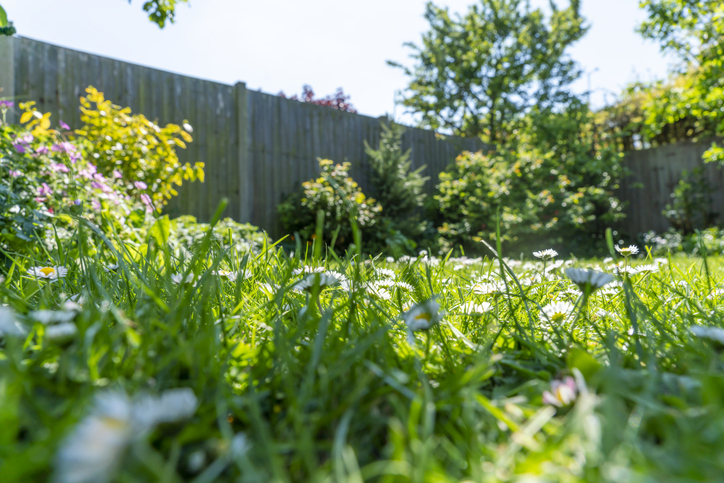
Longer grass offers shelter and sustenance (Credit: Alphotographic via Getty Images)
Perfectly clipped lawns may impress the neighbours, but to nature, they offer little shelter or sustenance. Allowing the grass to grow more than usual encourages tall stems and flowering weeds such as daisies or clover to emerge. Over time, this creates a miniature meadow, rich in nectar and buzzing with life.
Importantly, it doesn’t have to apply to the entire lawn. Setting aside just one section – perhaps a corner or a strip along a boundary – can make a meaningful difference. This partial approach allows the garden to balance structure and softness, providing visual variety while supporting more species than a uniform lawn ever could.
Planting for Pollinators
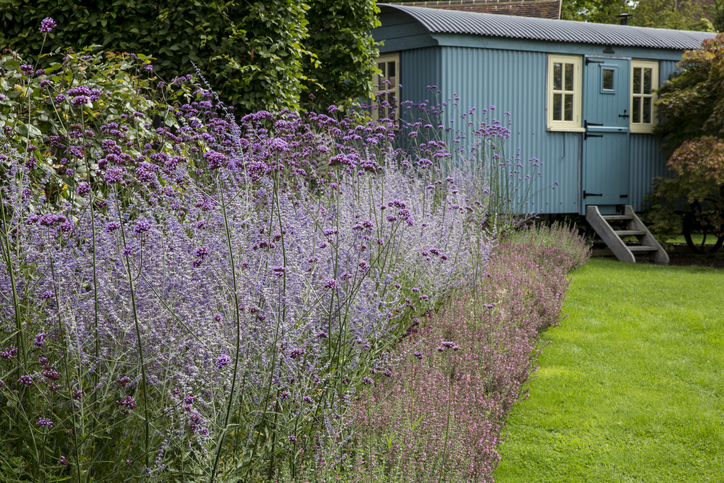
Nectar-rich lavender is a great pollinator (Credit: Mint Images via Getty Images)
One of the most rewarding wildlife-friendly garden ideas is creating a pollinator-friendly paradise. Bees and butterflies depend on a steady supply of nectar from spring through autumn. For example, clustering nectar-rich plants such as lavender, foxglove, and echinacea makes it easier for insects to find food. What’s more, choosing native wildflowers enhances this effect, as local species have evolved hand in hand with local pollinators. By planning ahead, a border that blooms from March to October ensures that something is always in season for these vital visitors, keeping the garden alive with colour and movement throughout the year.
Hedges Over Fences
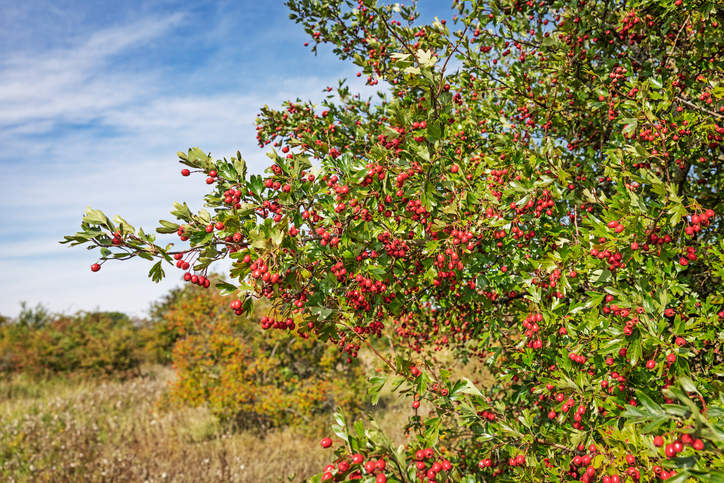
A hawthorn hedge provides shelter and food (Credit: carstenbrandt via Getty Images)
A key element of any bird-friendly garden design is the humble hedge. While fences define boundaries, hedges support life. For instance, mixed native species like hawthorn, hazel, and dog rose provide food, nesting spots, and safe passage between gardens. In spring, blossoms feed early bees; in autumn, berries sustain migrating birds. In addition, hedges soften hard edges and introduce gentle movement, turning a boundary into a biodiverse corridor that supports life year-round.
Water Works Wonders

Birds, frogs and dragonflies love a garden pond! (Credit: Pauline Lewis via Getty Images)
Water brings an entirely new dimension to any wildlife-friendly garden design. For instance, a pond, no matter how small, becomes a magnet for life. Birds bathe, frogs breed, and dragonflies dance across the surface. Ideally, a shallow, gently sloping edge ensures safe access for small creatures, while native aquatic plants such as water mint and pondweed keep the water clean. Even a simple solution, like a buried bucket or half-barrel, can become a miniature wetland for thirsty visitors and pollinators alike.
Welcoming the Wild

Logs attract wildlife and insects (Credit: Jacky Parker Photography via Getty Images)
Nature thrives where tidiness takes a back seat. A quiet pile of logs tucked under a tree or a layer of autumn leaves can become prime real estate for beetles, toads, and hedgehogs. Features such as this support the tiny creatures at the base of the food web, ensuring there’s plenty for birds and mammals to eat.
Feeding Feathered Friends
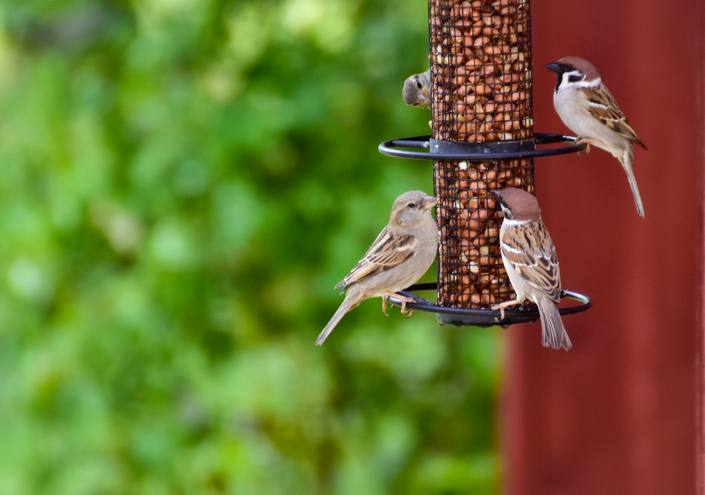
Sparrows eating from a garden feeder (Credit: Ingunn B. Haslekaas via Getty Images)
Supplementing natural food sources with well-placed, well-maintained feeders helps birds through lean months. Offering a mix of seeds, suet, and fruit attracts a colourful cast of visitors, from robins to goldfinches. In doing this, safety is key. This can mean positioning feeders near shrubs where birds can retreat if startled, but not too close to where predators might hide. Equally important, regular cleaning can help prevent disease and ensure the bird-friendly garden design remains a healthy haven.
Building a Bug Hotel

A bug hotel fit for a queen (bee)! (Credit: Richard Newstead via Getty Images)
A wildlife-friendly garden isn’t complete without considering its smallest residents. Bug hotels, made from bamboo, pinecones, and wood, give solitary bees and beetles a place to rest and reproduce. Placed in a sunny, sheltered spot, they provide endless fascination for children and adults alike.
Going Organic
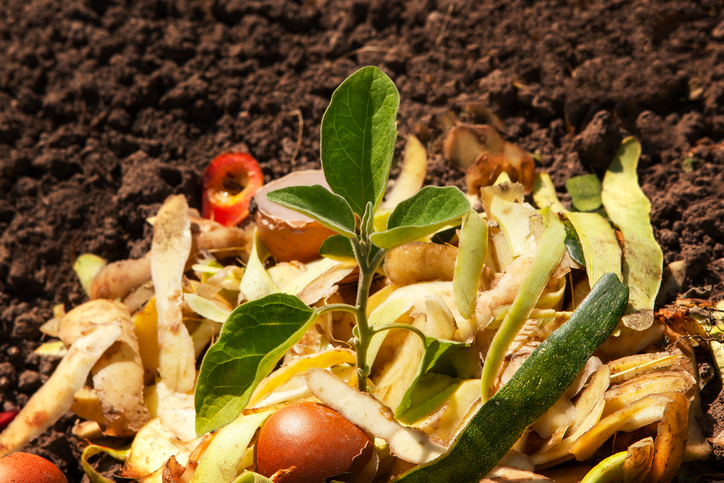
Composting kitchen scraps enriches the soil (Credit: Natallia Saksonova via Getty Images)
Pesticides and herbicides may promise perfection, but they can disrupt the delicate balance of life. Instead, organic gardening methods protect beneficial insects and ensure that birds and mammals can safely forage. For instance, composting garden and kitchen waste not only enriches the soil but also attracts worms and microfauna – vital food sources for many species. Ultimately, keeping things natural helps a wildlife-friendly garden sustain itself from the ground up.
Keeping It Native
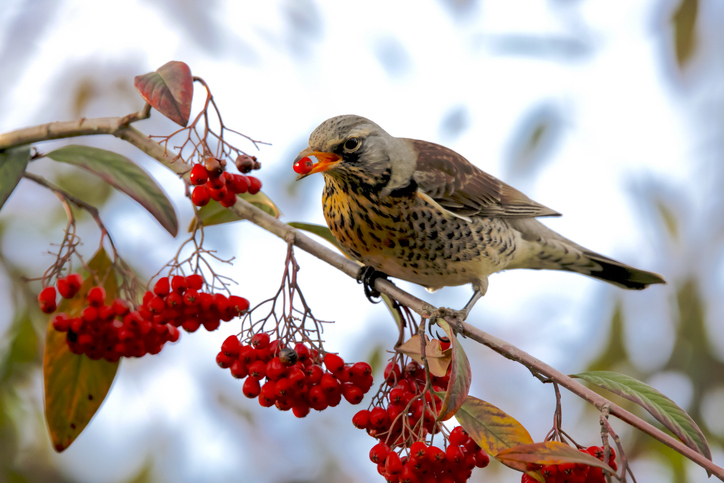
Rowan trees provide food and shelter (Credit: Westend61 via Getty Images)
Planting native species is one of the simplest and most effective wildlife-friendly garden ideas. These plants are perfectly adapted to the local climate and support a wide range of insects and birds. For example, wild marjoram, hawthorn, and rowan trees all provide both food and shelter throughout the year. As an added bonus, native plants tend to be more resilient and require less maintenance, making them ideal for both wildlife and busy gardeners alike.
Adding Nest Boxes and Natural Nooks

Hedgehog houses are safe havens for our pointy pals (Credit: Carmelka via Getty Images)
Providing shelter is just as important as offering food. Bird boxes, bat boxes, and hedgehog houses can turn gardens into safe havens. To make the most of them, it’s also important to consider how and where they are installed, with some recommending mounting bird boxes facing east to avoid harsh winds and hot sun, placing bat boxes high up, and generally keeping entrances clear of obstructions. These small details can have an outsized impact on local wildlife populations.
Paths with Purpose

Wood chip paths provide microhabitats for insects (Credit: Orchidpoet via Getty Images)
Natural materials such as gravel, bark, and stepping stones not only look beautiful but also support biodiversity. For instance, these permeable surfaces allow rainwater to drain naturally while providing microhabitats for insects. Similarly, using stone or dry-stacked walls instead of concrete creates nooks for mosses and lichen, adding layers of interest and habitat. The effect is both practical and poetic – a space that breathes, buzzes, and blooms with life.
Part of a Bigger Picture
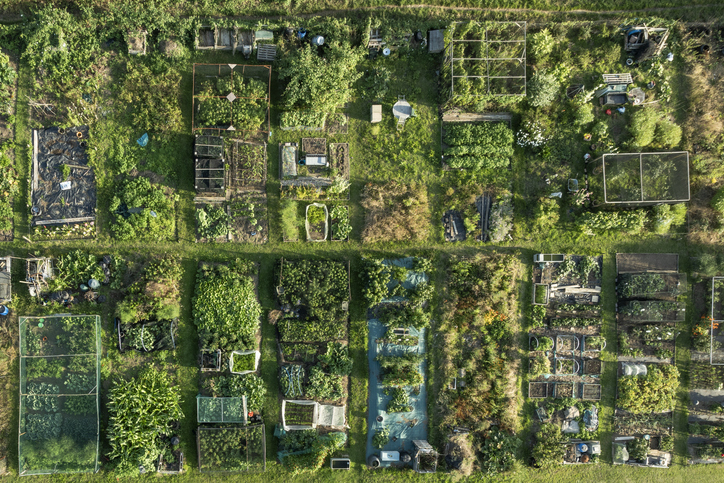
Community gardens are amazing ecosystems for all sorts of wildlife (Credit: Karl Hendon via Getty Images)
Perhaps the most inspiring aspect of a wildlife-friendly garden design is how it connects to others. Birds, hedgehogs, and insects need freedom to move between gardens. That’s why small gaps in fences or shared hedges can make a huge difference, creating green corridors across neighbourhoods. Collectively, even the smallest gardens can link to form thriving local ecosystems, turning urban areas into vital lifelines for wildlife.
A Garden that Gives Back

Gardens are for everyone! (Credit: Dgwildlife via Getty Images)
As we’ve seen, there are plenty of wildlife-friendly garden ideas, their emphasis less on relinquishing control and more on collaborating with nature. Every flower, pond, and patch of wild grass tells a story. More than anything, it’s a reminder that beauty doesn’t have to be sterile – it can hum, chirp, and flutter too. In the end, the most rewarding gardens aren’t just seen; they’re full of life.








